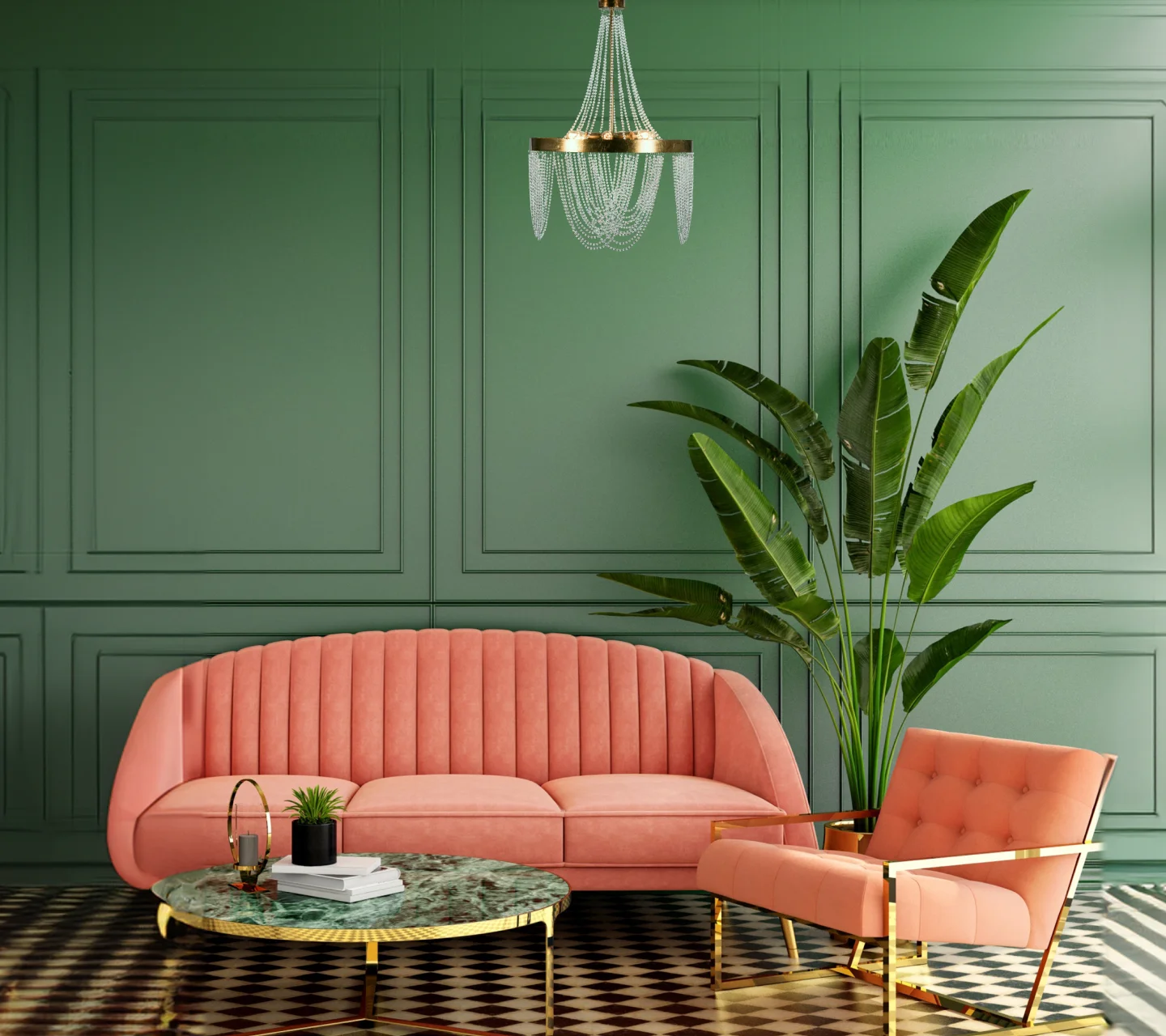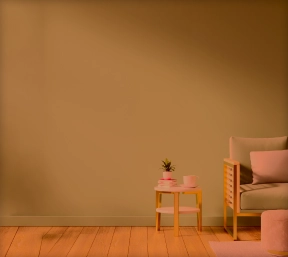- Transform and Protect Your Home Exteriors the Right Way
- What is Exterior Painting?
- How is Exterior Painting different from Interior Painting?
- Techniques for Exterior Painting
- Best Colours for Home Exterior Walls As Per Vastu
- Right Time for Exterior Painting
- Choosing the Right Exterior Paint
- Types Of Exterior Paint
- Colour Combination for Exteriors
- Tools and Equipment for Exterior Painting
- Checklist for Exterior Painting
- Things To Do Before Exterior Painting
- Painting Different Exterior Surfaces
- Things to Consider for After Painting Exterior Walls
- Common Exterior Painting Issues
- How Asian Paints Can Help with Exterior Wall Painting For You?
Mastering the Art of Exterior Painting
Transform and Protect Your Home Exteriors the Right Way
Whenever it comes to painting, we usually pay a lot of attention to our interiors, from selecting the best paints to textures and wallpapers. Similarly, it’s essential to also give the same importance to the exterior walls. Small cracks or irregularities on these walls can affect the interiors of the house. Although similar to the interiors, the question of ‘how to paint a house exterior?’ remains a mystery. So, let’s put an end to that question by exploring the world of exterior painting through this guide. Understanding the best exterior house colours, the right time to do exterior painting, how to paint a house exterior, types of exterior paints, exterior paint drying time, and more.
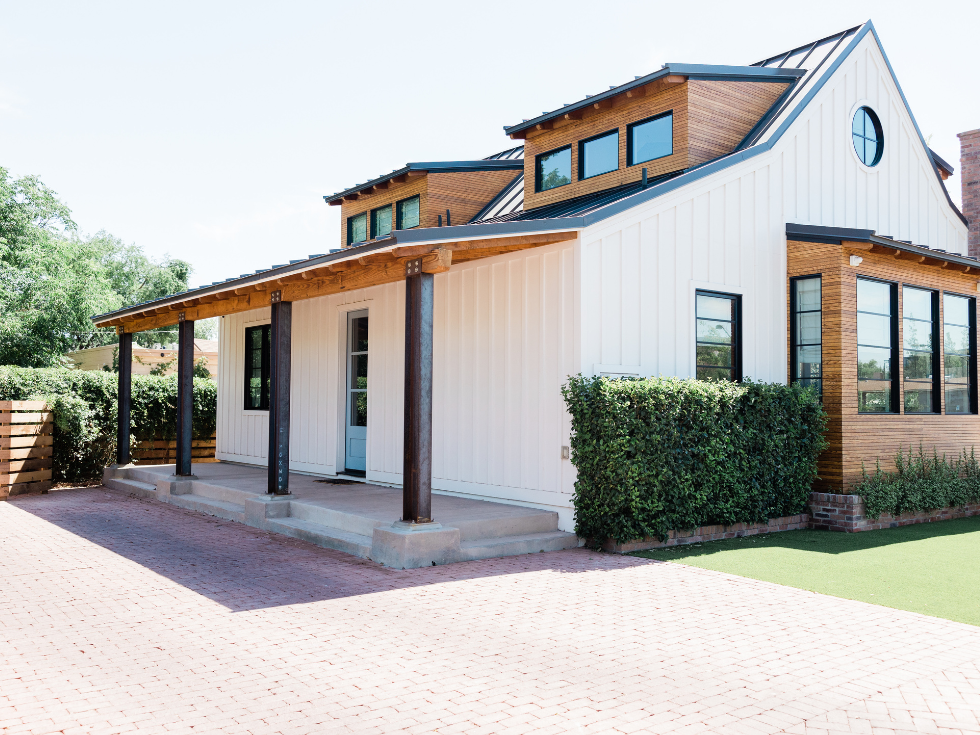
What is Exterior Painting?
Exterior home painting refers to the process of applying paint or protective coatings to the outer surfaces of a home or building. It involves coating the exterior walls, doors, windows, trims, and other outdoor elements with paint to enhance the appearance and protect the surfaces from weathering and damage. The choice of exterior house colours is a crucial aspect of exterior painting as it can significantly impact the overall curb appeal and aesthetic appeal of a home. Exterior home painting typically requires durable and weather-resistant paints that can withstand exposure to sunlight, rain, wind, and other elements for an extended period. Also exterior house colours play an important role to make your house standout and make it look aesthetic.
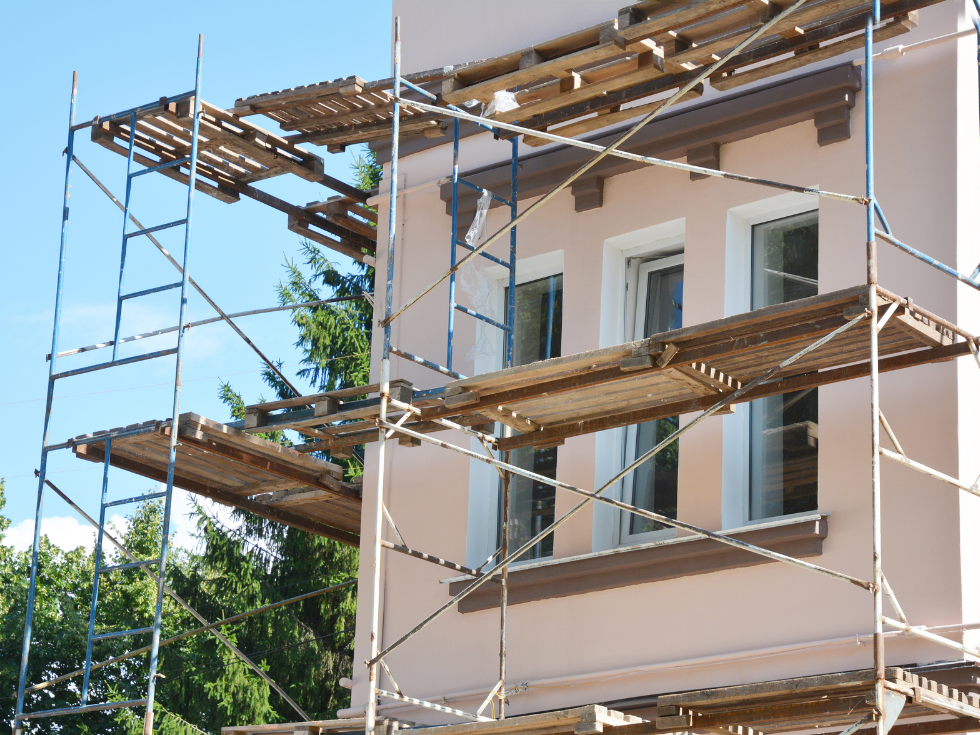
How is Exterior Painting different from Interior Painting?
Exterior painting and interior painting are two distinct processes that require different techniques and considerations. When it comes to exterior home painting, the focus is on protecting the house from harsh weather conditions, UV rays, and moisture. The choice of paint colours for the exterior is also crucial as it affects the curb appeal and overall aesthetic of the house. Exterior painting requires more durable and weather-resistant paints to withstand the elements. Moreover, proper surface preparation and repair work are essential to ensure a long-lasting finish. In contrast, interior painting focuses more on creating a pleasing and comfortable atmosphere, with an emphasis on colour selection that complements the interior design.
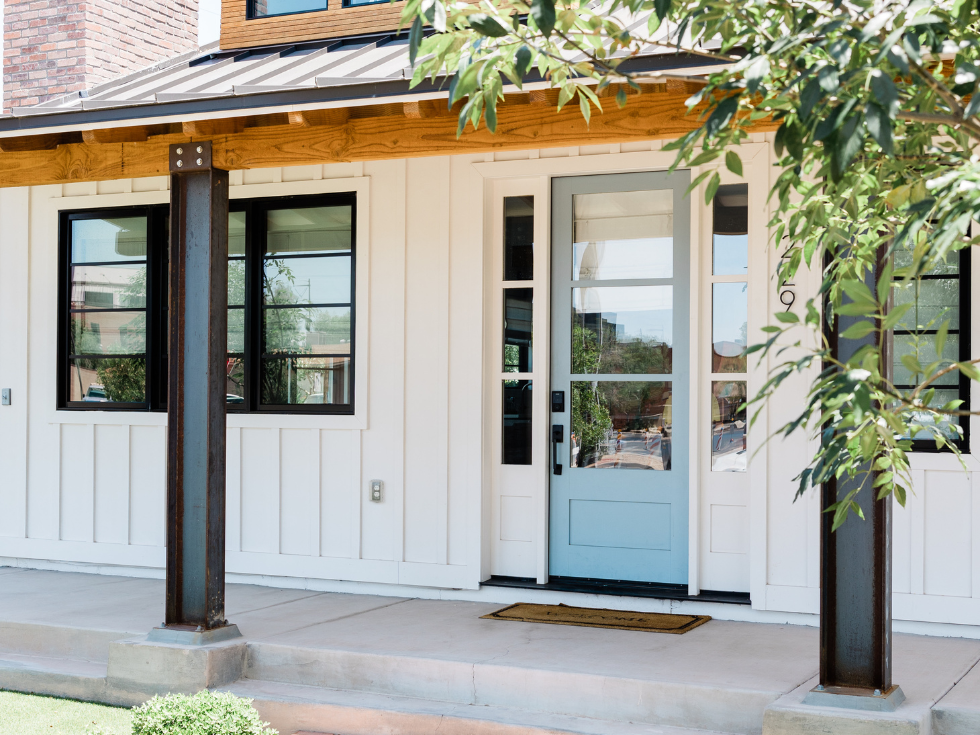
Techniques for Exterior Painting
Exterior painting can be a daunting task and the question of ‘how to paint house exterior?’ always comes to mind, but with the right techniques, you can have a beautiful outer colour of the house. Here are some key pointers on how to paint a house exterior:
1. Prep the Surface
Begin by thoroughly cleaning the exterior surface, and removing dirt, grime, and loose paint. Repair any cracks or holes and ensure a smooth surface.
2. Choose the Right Paint
Opt for high-quality exterior paint that is specifically designed for outdoor use. Consider factors like weather resistance and durability.
3. Protect Surrounding Areas
Cover windows, doors, and other areas with plastic sheeting or painter's tape to prevent paint splatters.
4. Start with Primer
Apply a coat of primer before painting to enhance adhesion and provide a solid base for the paint to adhere to.
5. Use Proper Tools
Invest in good-quality brushes, rollers, and sprayers to ensure an even application of paint. Consider the surface texture and choose appropriate tools accordingly.
6. Follow the Proper Technique
Start from the top and work your way down, painting in small sections. Apply thin coats and allow sufficient drying time between coats.
7. Consider Weather Conditions
Avoid painting in extreme temperatures or during rainy or humid weather as it can affect the drying and bonding process.
8. Maintain a Consistent Colour Scheme
Select exterior house colours that harmonize with the surroundings and maintain a cohesive look.
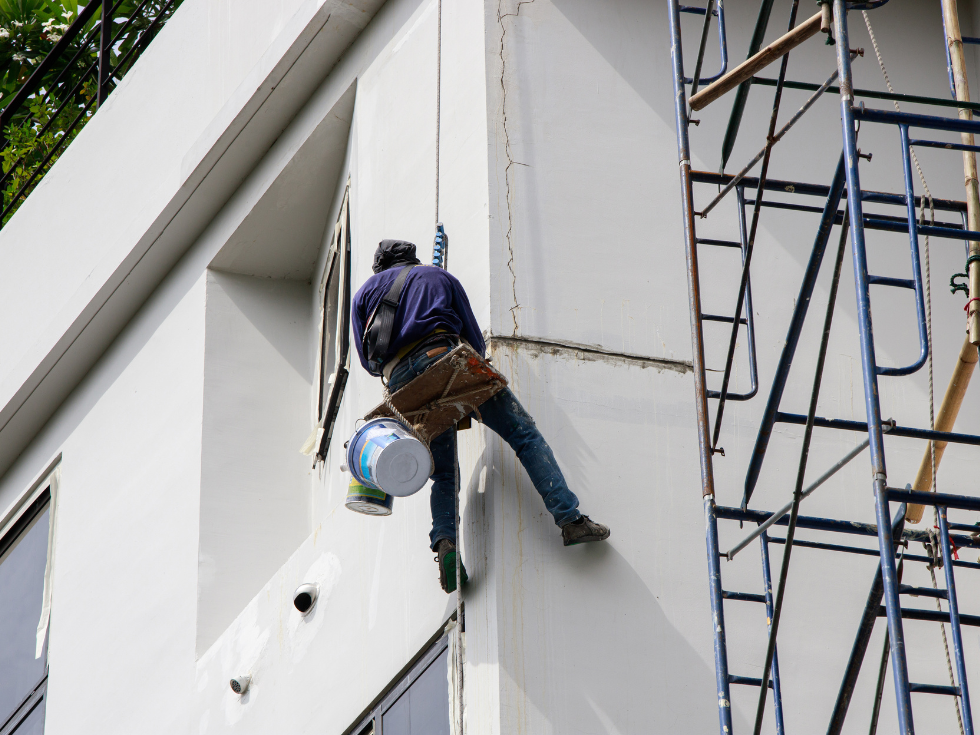
Best Colours for Home Exterior Walls As Per Vastu
According to Vastu Shastra, choosing the right exterior wall paint colour according to vastu can create a harmonious environment and positive energy flow. Here are some pointers on the best vastu colours for home exterior walls:
- • Earthy Tones
- • White
- • Blues and Greens
- • Avoid Dark Shades
- • Balance with Accents
Opt for earthy colours like beige, light yellow, or light brown for a warm and welcoming feel.
White is considered auspicious and brings purity and clarity. It is a versatile choice that goes well with any architectural style.
Shades of blue and green are associated with tranquillity and abundance. They promote a sense of peace and harmony.
Avoid using dark colours like black or dark grey for the entire exterior, as they tend to absorb heat and can make the house feel gloomy.
Add pops of vibrant colours as accents on doors, windows, or other architectural features to create visual interest while maintaining a balanced overall appearance.
When selecting exterior wall paint colours according to Vastu, it's essential to consider the direction and orientation of your home, as different colours are recommended for different directions.
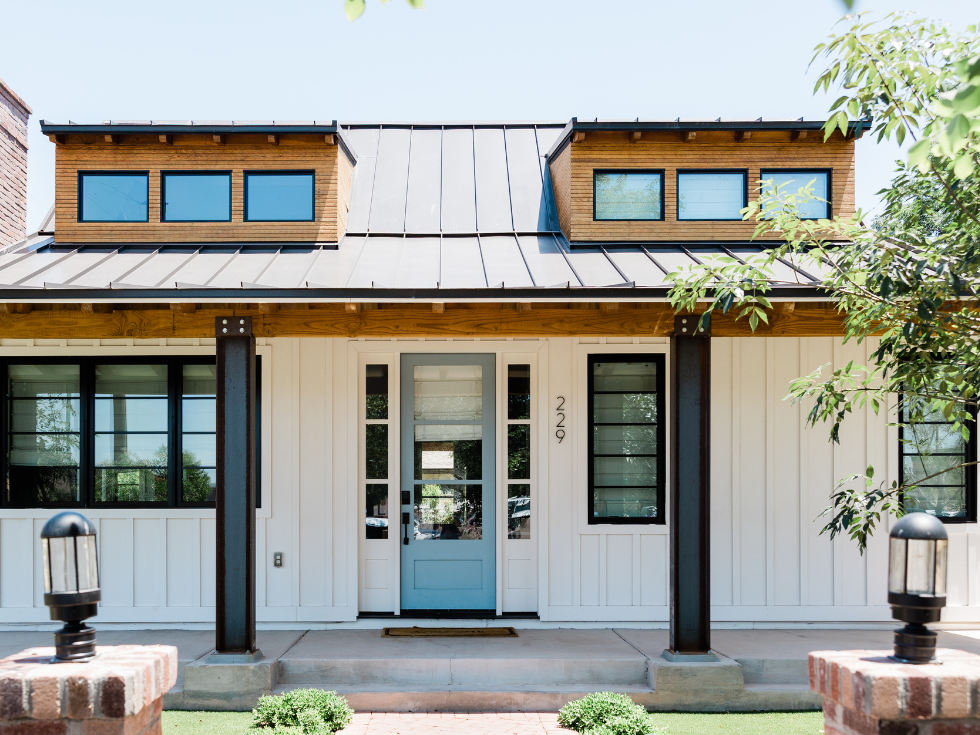
Right Time for Exterior Painting
When it comes to painting exterior walls for the first time, timing is everything. Choosing the right time to embark on this project can significantly impact the outcome and longevity of your paint job. It's essential to consider factors such as weather conditions and the maximum recommended time between coats of paint. Ideally, painting should be done during mild and dry weather, avoiding extreme temperatures or rainy periods. This allows the paint to adhere properly and dry evenly. Additionally, following the manufacturer's instructions regarding the maximum time between coats of paint ensures proper curing and a seamless finish. By painting at the right time and allowing sufficient drying time, you can achieve a stunning and long-lasting result for your home's exterior walls.
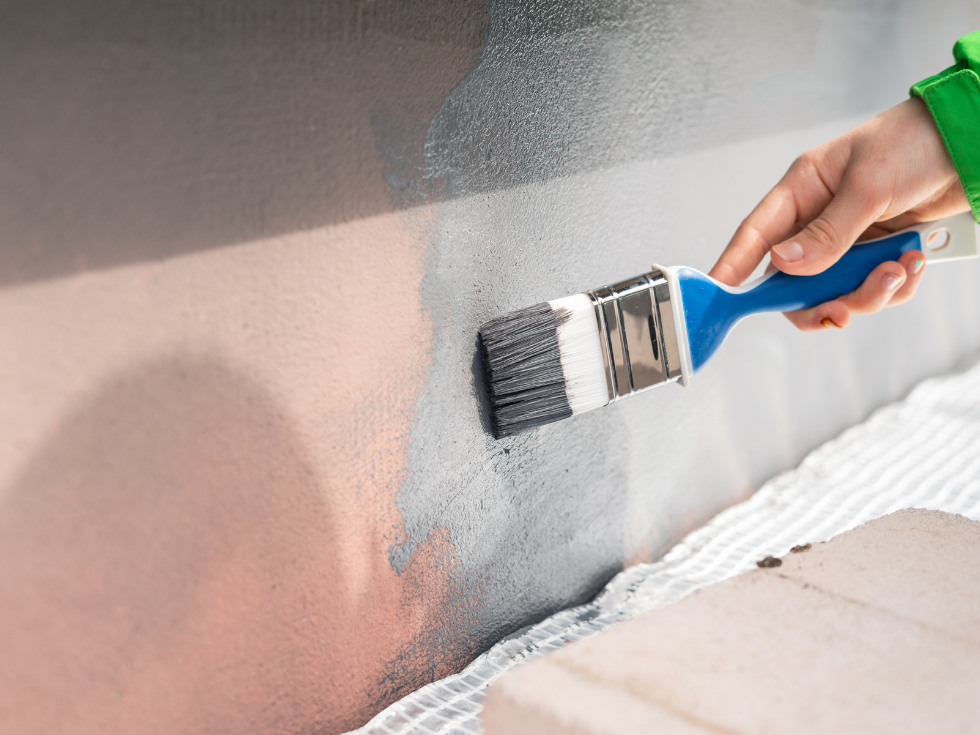
What Is The Right Season To Do Exterior Painting?
When it comes to painting exterior walls for the first time, choosing the right season is crucial for a successful and long-lasting paint job. The ideal season for exterior painting is typically during the warmer seasons. These seasons offer more consistent and favourable weather conditions, including mild temperatures and lower humidity levels, which are essential for paint to adhere properly and dry evenly. Additionally, painting during these seasons allows for longer daylight hours, providing ample cure time for paint and achieving its full durability.
By selecting the right season, you can ensure that your exterior walls receive the care and attention they need for a beautiful and enduring finish.
How Long Does It Take For The Exterior Paint To Dry?
The drying time for exterior paint can vary depending on factors such as the type of paint and environmental conditions. Generally, paint can dry to touch within 30 minutes to 4 hours. However, the curing time, which refers to the paint fully hardening and reaching its maximum durability, can take anywhere from 1 to 30 days. It's important to note that the maximum time between coats of paint is typically around 4 hours for water-based latex paints. It's recommended to consult the specific product instructions for accurate drying and curing times to ensure a successful and long-lasting paint job.
Choosing the Right Exterior Paint
When choosing the right exterior paint for your home, keep these pointers in mind:
- • Quality
- • Durability
- • Climate suitability
- • Colour options
- • Finish
- • Brand reputation
Opt for a high-quality outdoor wall paint that is specifically designed for outdoor use. It should be able to withstand various weather conditions and provide long-lasting protection.
Look for a paint that offers excellent durability and resistance to fading, cracking, and peeling. This will ensure that your exterior walls stay vibrant and well-maintained for years to come.
Consider the climate in your area. If you live in a region with extreme heat, cold, or humidity, choose a paint that is formulated to withstand those specific conditions.
Explore a wide range of exterior house paint colours to find the perfect hue that complements your home's style, architecture, and surroundings. Consider both personal preference and the overall aesthetic appeal.
Decide on the desired finish for your exterior walls, such as matte, satin, or glossy. Each finish has its unique look and level of sheen.
Select a reputable paint brand known for its quality and reliability. Read reviews and seek recommendations to ensure you're choosing the best paint for your exterior walls.
Remember, selecting the exterior house paint colours and paint is crucial for protecting and enhancing the beauty of your home. Take the time to research and consider all these factors to make an informed decision.
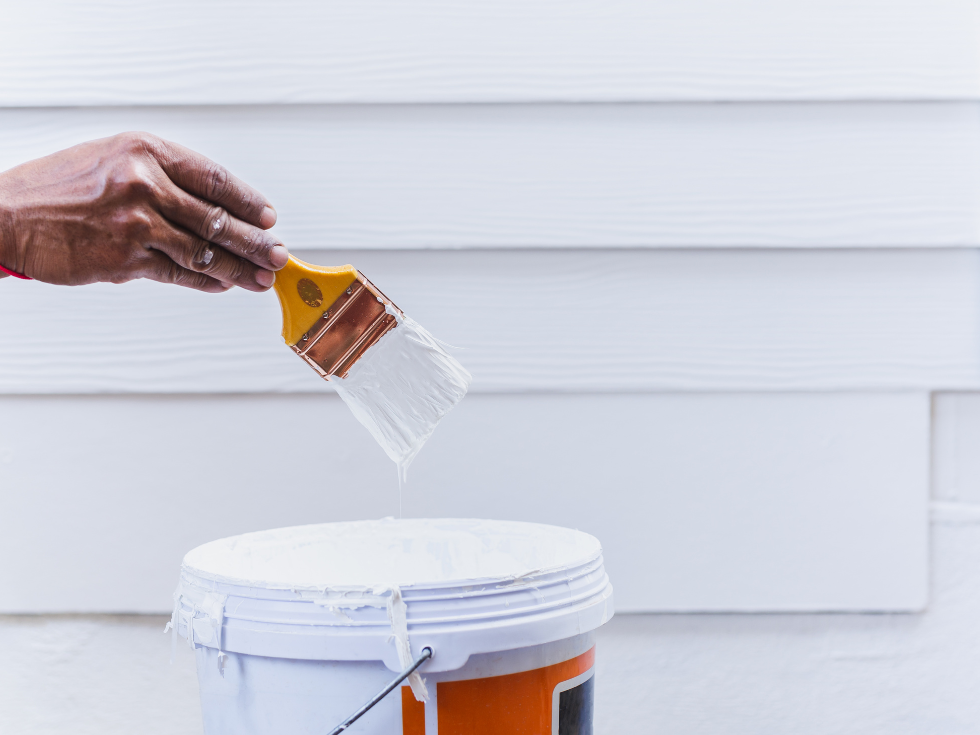
Types Of Exterior Paint
When it comes to choosing the right exterior paint for your home, there are several types to consider. Here are some common types of exterior paint:
- • Latex or Water-based
- • Oil-based
- • Acrylic
- • Elastomeric
- • Textured
- • Primer
Latex paint is a popular choice for exterior walls due to its durability, easy application, and quick drying time. It is also resistant to cracking, peeling, and fading.
Oil-based paints provide a more durable finish and are ideal for surfaces that require extra protection, such as wood or metal. They are known for their long-lasting performance and ability to withstand harsh weather conditions.
Acrylic paints are a blend of water-based and oil-based paints. They offer good adhesion, flexibility, and weather resistance. Acrylic paints are suitable for a wide range of exterior surfaces and come in various finishes.
Elastomeric paint is highly flexible and can expand and contract with temperature changes. It is ideal for areas prone to cracking, such as stucco or concrete walls. Elastomeric paint provides excellent waterproofing and protects against moisture damage.
Exterior texture paint adds depth and dimension to your walls. They are available in different textures like sand, stone, or stucco, and can help hide imperfections on the surface.
A primer is not technically a type of paint, but it is an essential step in the painting process. Primers create a smooth and even surface, improve paint adhesion, and enhance the longevity of the topcoat.
Each type of exterior paint has its unique qualities and benefits. Consider factors like the surface you're painting, climate conditions, and desired aesthetic when choosing the appropriate type of paint for your home's exterior.
You can also browse through Asian Paints Exterior Paint Collection which provides your walls with the necessary care and protection.
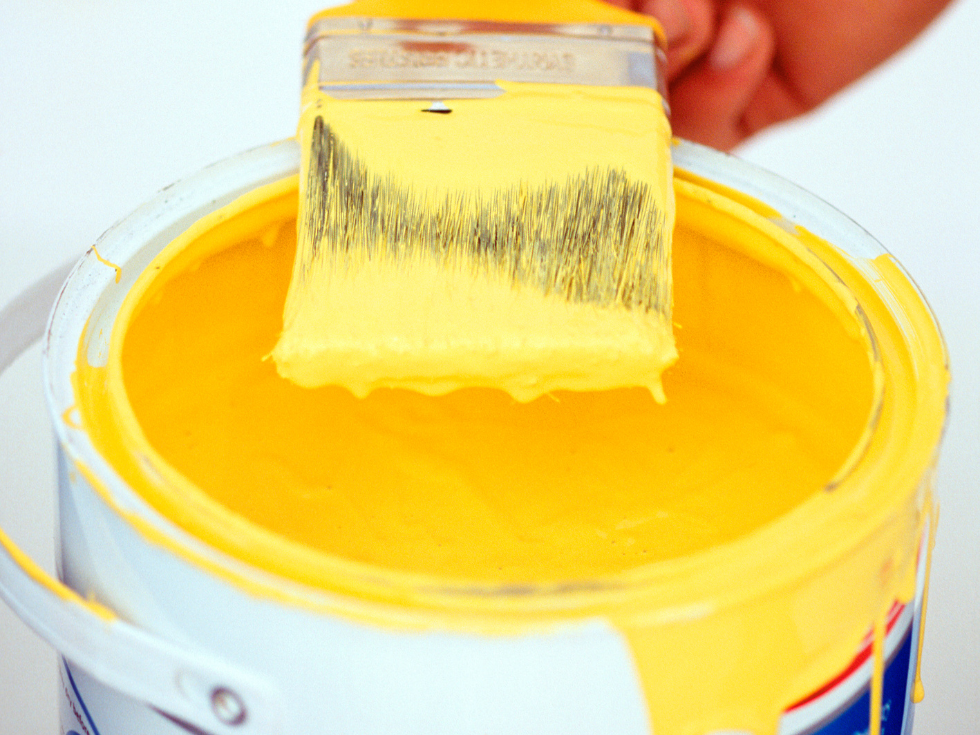
Colour Combination for Exteriors
Here are 5 house painting colour combinations for exteriors that can add curb appeal to your home:
• Classic White and Black
A timeless exterior colour Combination, white as the main colour creates a clean and elegant look, while black accents such as shutters, doors, and trim add contrast and sophistication.
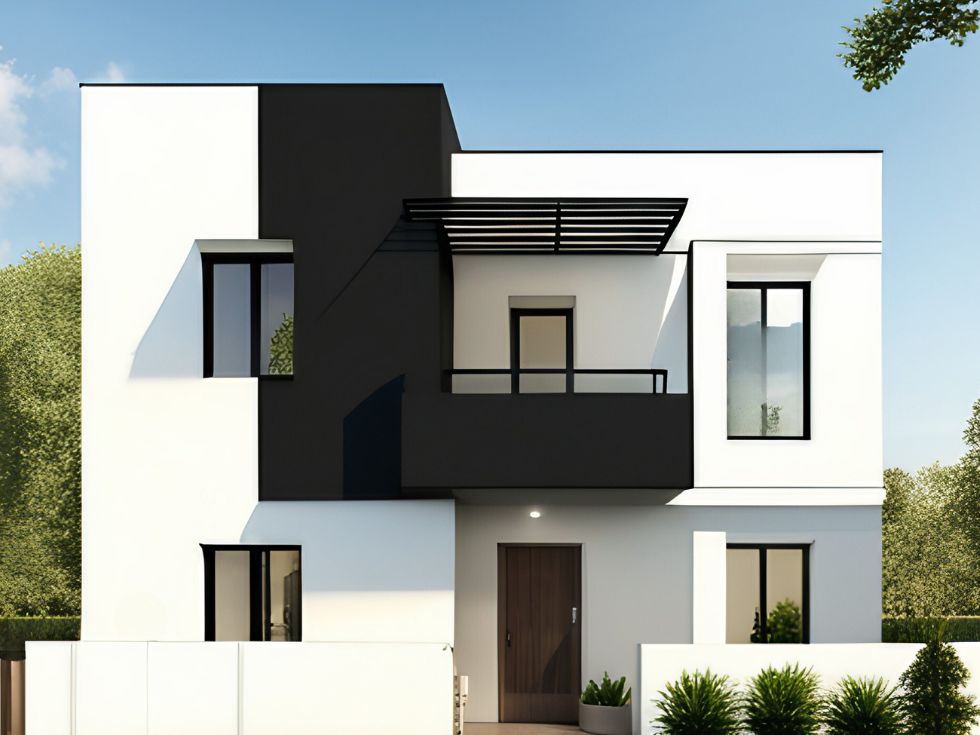
• Neutral Greys with a Pop of Colour
Choose a neutral grey shade for the main body of your home, and then add a pop of colour for the front door or window trims. Popular options include vibrant red, bold blue, or sunny yellow to create visual interest.
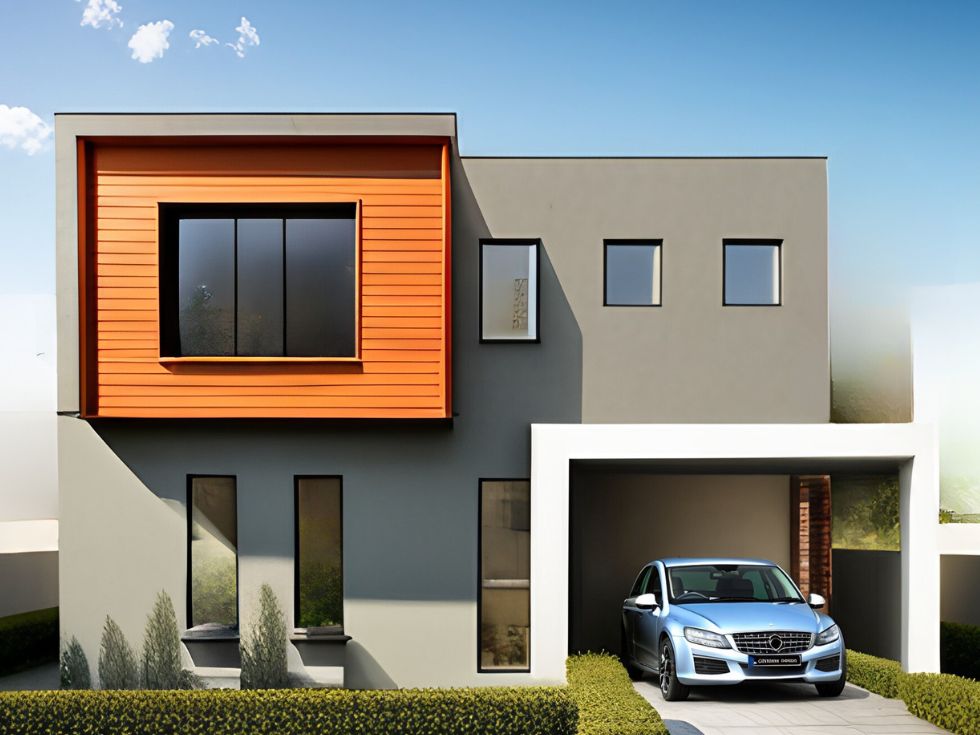
• Earthy Tones
Embrace nature-inspired colours such as olive green, warm beige, and rich brown. These earthy tones blend well with natural surroundings, creating a harmonious and inviting exterior.
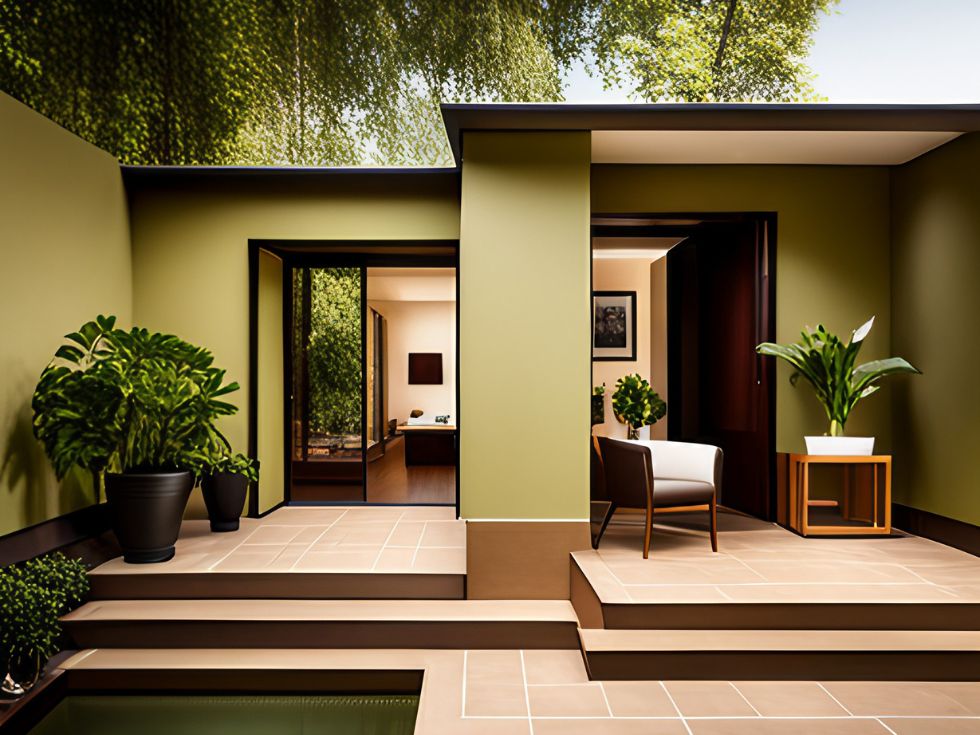
• Coastal Blues and Whites
Create a relaxing and coastal vibe by combining different shades of blue with white. Light blue for the main body and crisp white for trim and accents will evoke a beachy feel, perfect for coastal or lakeside homes.
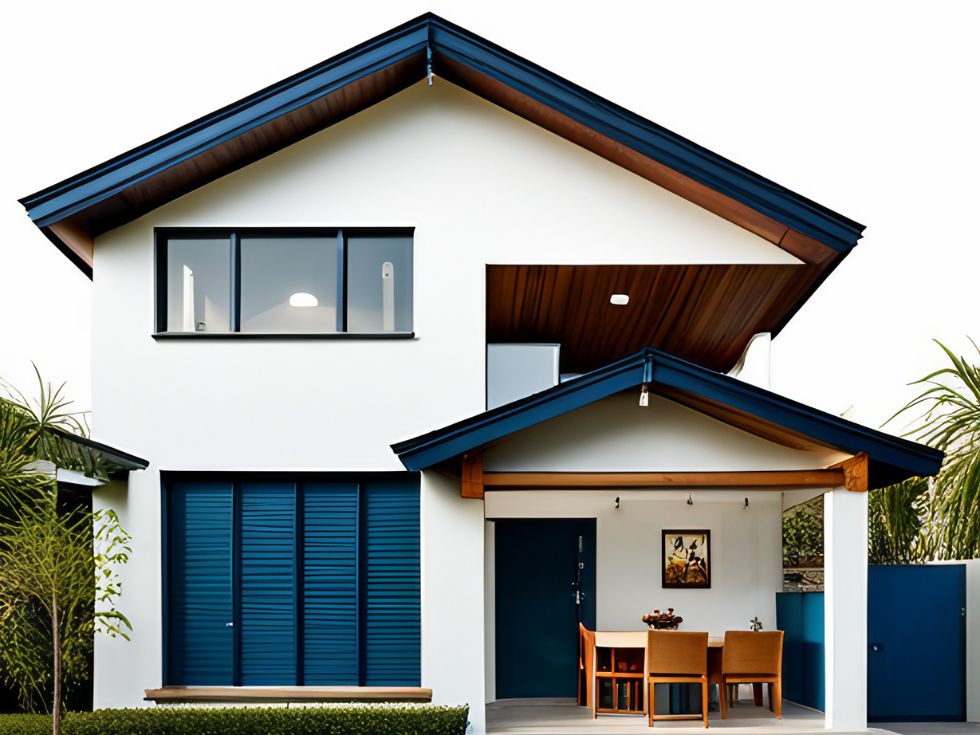
• Modern Contrast
For a contemporary and eye-catching look, consider using contrasting house painting colour combinations. Pairing a light grey or taupe with a striking dark charcoal or navy can create a sleek and modern aesthetic.
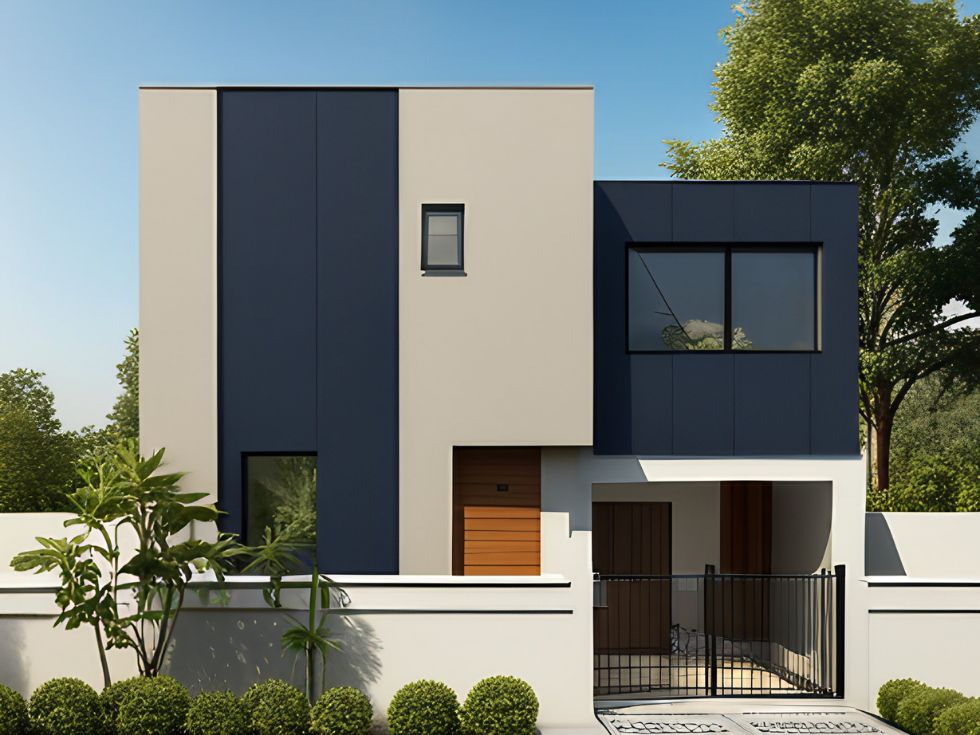
Remember, when selecting colour combinations, consider factors such as the style of your home, the surrounding environment, and your personal preferences. It's also a good idea to test paint samples on your exterior walls to see how they look in different lighting conditions before making a final decision.
Tools and Equipment for Exterior Painting
When it comes to exterior painting, having the right tools and equipment is essential to achieve professional-looking results. Whether you're tackling a house painting project or providing commercial paint services, having the appropriate tools can make all the difference. In this article, we will explore various tools and equipment that are commonly used in exterior painting. So let's dive in!
Professional Painting Tools for All Jobs
Professional painters understand the importance of using high-quality tools that can withstand the demands of the job. Here are some essential tools that every professional painting painter should have:
- • Paint Brushes and Rollers
- • Pressure Washers
- • Sanding Tools
- • Spray Gun
A variety of paint brushes and rollers are available to cater to different surfaces and textures. From angled brushes for cutting in edges to high-quality rollers for smooth application, having the right brushes and rollers is crucial.
Before starting any painting project, it's important to thoroughly clean the surface. Pressure washers help remove dirt, grime, and loose paint, ensuring a clean and smooth surface for painting.
Sanding is necessary to create a smooth and even surface before painting. Tools such as sandpaper, sanding blocks, and electric sanders can make the sanding process more efficient.
For larger areas or textured surfaces, spray guns can be a time-saving tool. They provide a more even application and can cover large areas quickly.
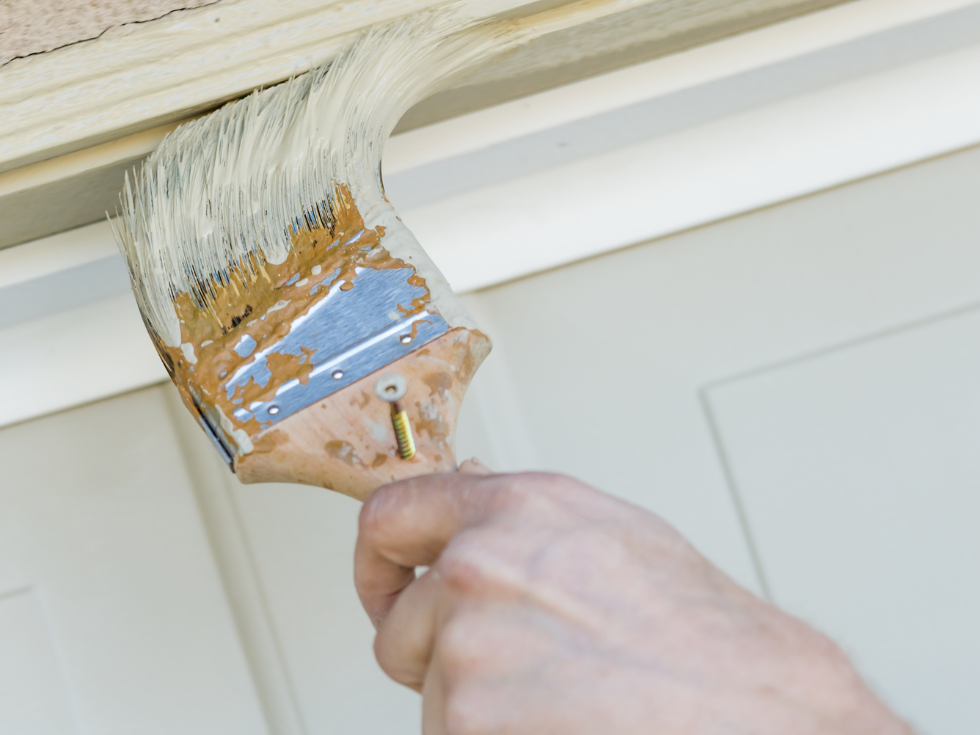
House Painting Tools
If you're planning to paint your house's exterior, here are some specific house painting tools that can come in handy:
- • Ladders and Scaffolding
- • Scrapers and Putty Knives
- • Extenders and Pole Sanders
Exterior painting often requires working at heights. Having sturdy ladders and scaffolding ensures safe access to all areas of the house.
These tools are useful for removing loose paint and repairing any damaged surfaces before painting.
To reach high or awkward areas, extenders can be attached to paintbrushes or rollers. Pole sanders are also useful for sanding hard-to-reach spots.
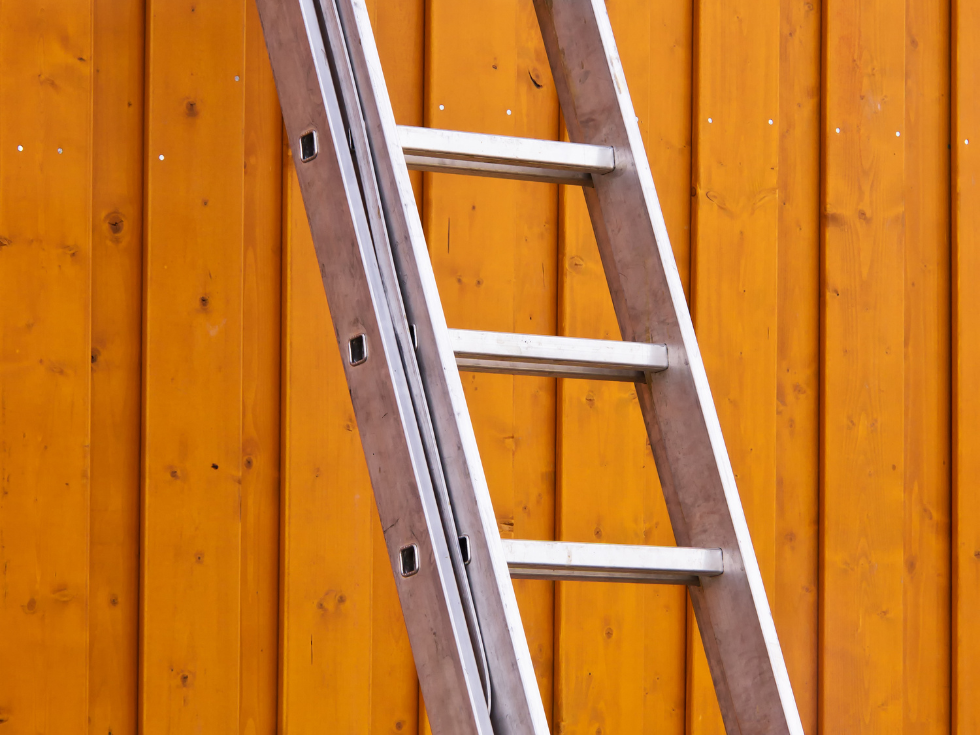
Commercial Painting Tools
For commercial paint services, where efficiency and productivity are key, the following tools are commonly used:
- • Airless Paint Sprayers
- • Roller Grids and Trays
- • Paint Mixers
These powerful sprayers are ideal for large-scale painting projects, such as commercial buildings and warehouses. They can cover extensive areas quickly and provide a smooth finish.
When using rollers, having roller grids and trays helps evenly distribute paint and prevent drips or spills.
For large quantities of paint, paint mixers ensure thorough mixing and consistency throughout the project.
In conclusion, whether you're a professional painter or a DIY enthusiast, having the right tools and equipment is essential for successful exterior painting. From brushes and rollers to pressure washers and spray guns, each tool serves a specific purpose in achieving professional results.
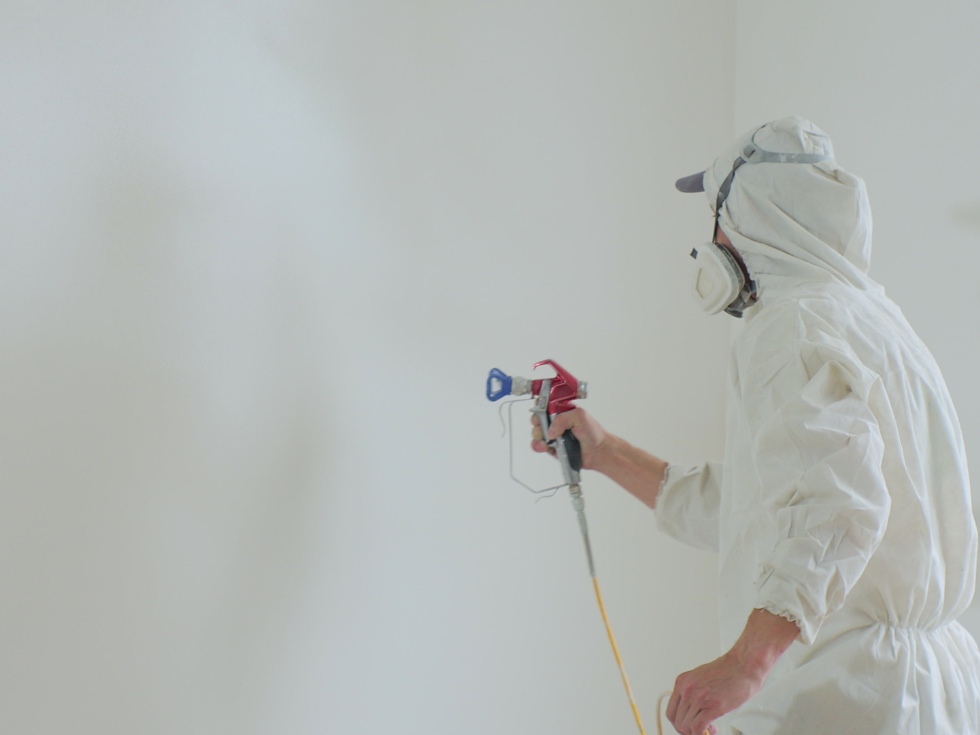
Checklist for Exterior Painting
Before starting any project it be exterior or interior you should always have a painting checklist in place, so you can have a proper understanding of what is required for this project and everything is organized -
1. Inspect the surface
Assess the condition of the exterior surface to identify any necessary repairs or prep work.
2. Clean the surface
Thoroughly wash the exterior surface to remove dirt, grime, and loose particles before painting.
3. Repair and prepare
Fill cracks and holes, scrape off loose paint, and sand the surface for a smooth base.
4. Protect surrounding areas
Cover nearby plants and use painter's tape to protect windows, trim, and other areas from paint splatter.
5. Choose the right paint and tools
Select high-quality exterior paint and gather the necessary brushes, rollers, and trays for the job.
6. Start painting
Begin at the top and work your way down, using brushes for detail work and rollers for larger areas, applying thin coats.
7. Allow proper drying and curing time
Ensure each coat is fully dry before applying the next and follow manufacturer instructions for curing time.
8. Clean up and maintenance
Clean brushes immediately, dispose of materials properly, and inspect for damage or wear on the painted surface.
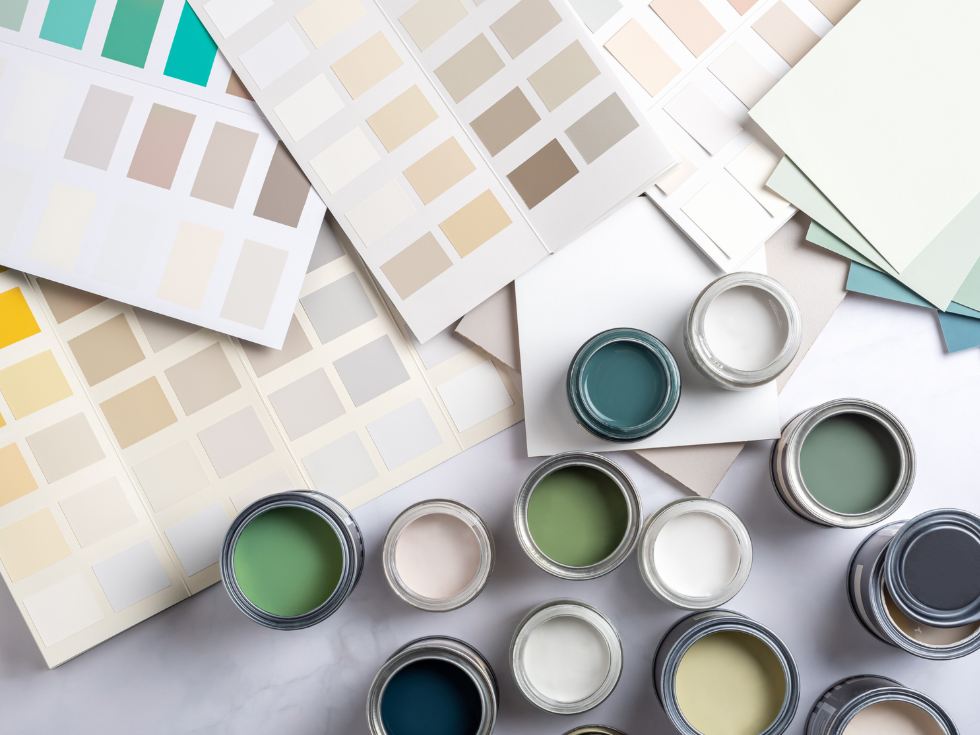
Things To Do Before Exterior Painting
Before diving into the painting process, there are a few essential steps to ensure a successful and long-lasting result. From proper planning, cleaning walls to repairing walls, here are some key tasks to prioritize for a seamless exterior painting experience.
1. Plan the Outside Building Painting Process
Before starting the building painting project, it's crucial to create a comprehensive plan. Consider factors like colour selection, surface preparation, and necessary supplies to ensure a smooth and efficient process.
2. Clean the Exterior Walls by Washing them with Water
Begin by thoroughly washing the exterior walls using water. Washing walls help remove dirt, dust, and other debris, ensuring a clean surface for the paint to adhere to.
3. Remove Paint Flaking Off Before Building Outside Painting
Before painting, it's essential to address any flaking or peeling paint. Scrape off the loose paint to create a smooth and even surface, allowing the new paint to adhere properly.
4. Sanding the Exterior Walls
Remove wall paint by sanding the walls which helps in smoothening any rough patches or uneven surfaces. It improves the adhesion of the new paint and creates a flawless finish.
5. Repairing Damaged Walls and Caulking the Exterior Gaps
Inspect the exterior walls for any damages such as cracks, holes, or gaps. Repair and fill them appropriately to prevent moisture infiltration and ensure a polished final look.
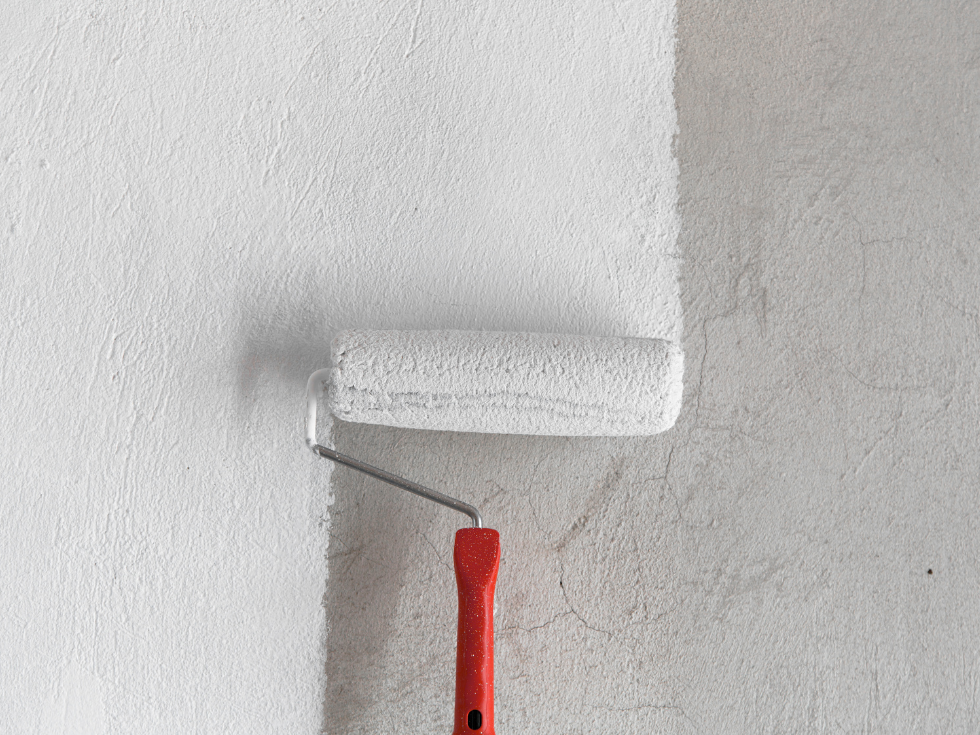
Painting Different Exterior Surfaces
Whether you're tackling the task of painting exterior windows, doors, or the roof, each surface requires a unique approach for optimal results. So let’s delve into the art of rejuvenating your home's exterior, covering essential tips and techniques for painting according to specific surface types.
How to Paint Exterior Window
Exterior window painting is a crucial role in defining the aesthetics of your home's exterior. To breathe new life into them, consider the following steps for window painting:
1. Preparation is Key
Begin by cleaning the windows thoroughly to remove any dirt or grime. Sand the surface lightly to ensure better paint adherence.
2. Choose the Right Paint
Opt for high-quality exterior window paint that offers durability and weather resistance. Consider paint with UV protection to maintain colour vibrancy over time.
3. Use Proper Techniques
Employ careful brushwork or masking techniques to achieve clean lines for the exterior window painting. Take extra care with muntins and dividers, ensuring they are evenly coated.
4. Maintenance Matters
Regularly inspect and touch up the exterior window painting to protect against weathering and maintain a polished appearance.
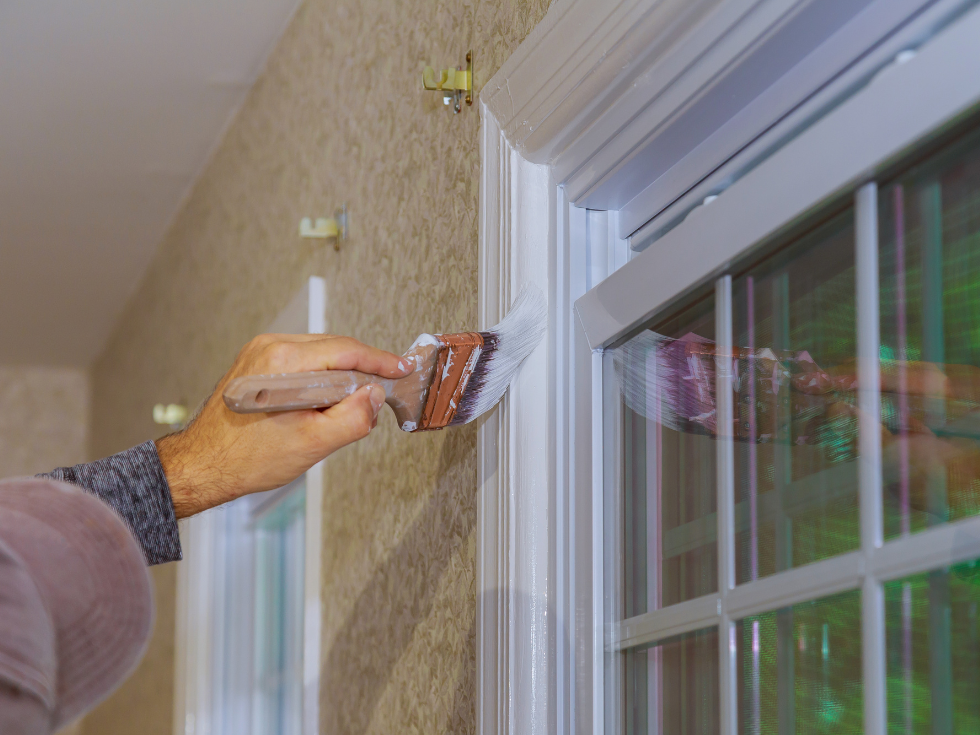
How to Paint Exterior Doors
Front door paint are a focal point of your home's facade, making door painting a critical aspect of exterior maintenance. Follow these steps for a vibrant and inviting entrance:
- • Surface Preparation
- • Colour Selection
- • Proper Priming
- • Weather Protection
Clean the door surface and sand it to create a smooth canvas for paint application. Remove any hardware or accessories that may obstruct the painting process.
Choose a colour that complements your home's overall aesthetic. Experiment with door paint colours that make a statement or blend seamlessly with the surroundings.
Apply a suitable primer to enhance paint adhesion and ensure a longer-lasting finish. This step is particularly crucial for wooden doors.
Opt for exterior door paint that provides weather resistance. This is essential for preserving the door's appearance and structural integrity.
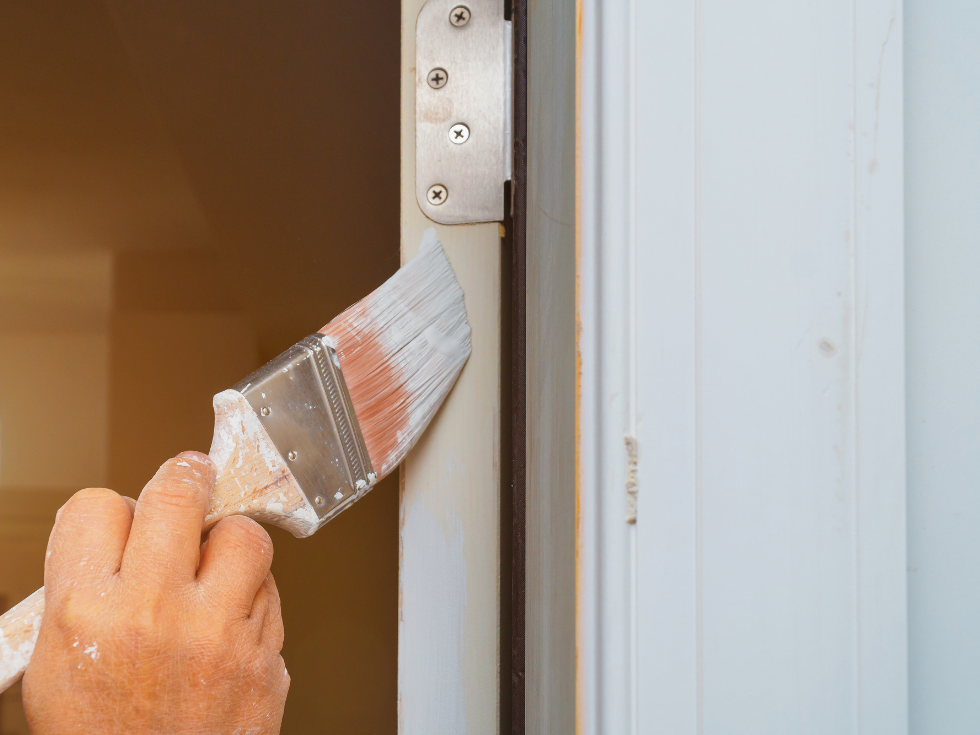
How to Paint a Roof
Taking on the task of painting a roof requires careful consideration, especially when dealing with different types of roofing materials. Here's a guide to help you navigate roof painting:
- • Roof Cooling Paint
- • Roof Waterproofing Paint
- • Proper Application Techniques
- • Regular Maintenance
Consider using specialized cooling paint to reduce heat absorption and keep your home cooler. This is particularly beneficial in warmer climates.
To protect your roof from the changing weather consider applying paint for waterproofing the roof. This is essential for preventing leaks and increasing the longevity of your roof.
Whether your roof is made of shingles, tiles, or metal, ensure you follow manufacturer guidelines for proper paint application. Consider professional assistance for intricate roof designs.
Inspect your painted roof regularly and touch up areas prone to wear and tear. This proactive approach ensures that your roof continues to provide effective protection.
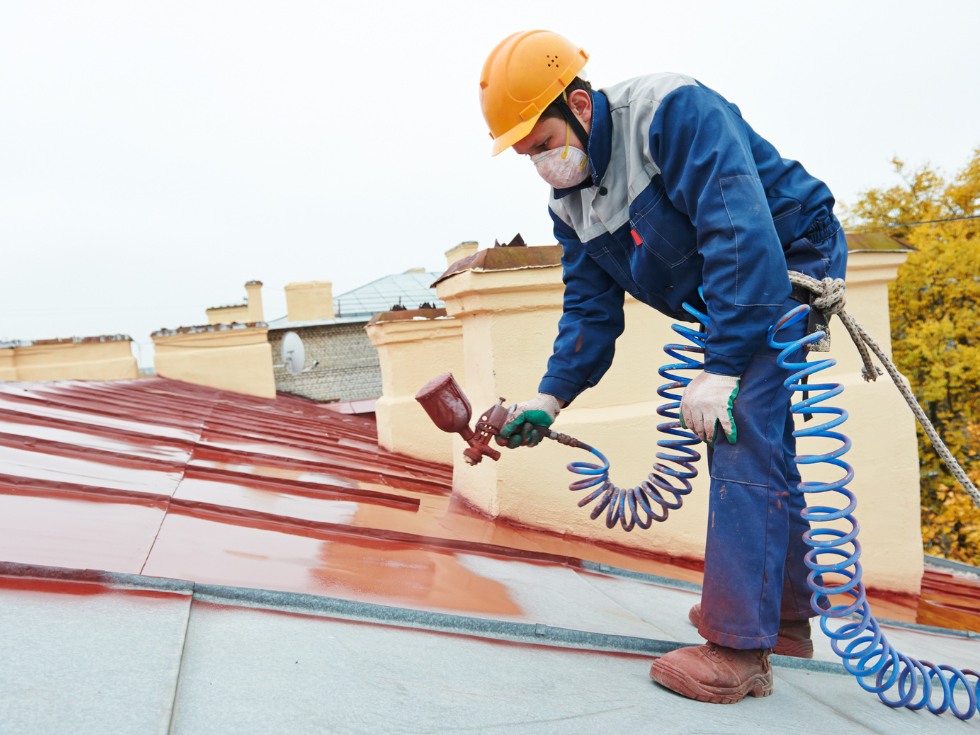
By following these tips for window painting, exterior door painting, and roof painting, you can revitalize the exterior of your home and ensure lasting beauty and protection against the elements. Choose the right paint, employ proper techniques, and enjoy the transformative impact on your home's curb appeal.
Things to Consider for After Painting Exterior Walls
Now that you have transformed the look of your home, it's important to consider some key aspects for proper maintenance and future repainting. In this guide, we will discuss essential considerations for painting exterior walls, including cleaning and maintenance tips, as well as repainting during renovation. By following these recommendations, you can ensure that your newly painted walls remain in excellent condition for years to come.
Cleaning & Maintenance
- • Easy Clean Paint
- • Exterior Wall Washing
Opting for easy clean paint not only enhances the aesthetic appeal of your home but also simplifies the maintenance process. This type of paint is formulated to repel dirt and stains, making it easier to clean the exterior walls.
Regular exterior wall washing is imperative to remove accumulated dirt, dust, and pollutants. A gentle yet thorough cleaning routine helps prevent the buildup of grime, preserving the integrity of the paint and ensuring a fresh, inviting appearance.
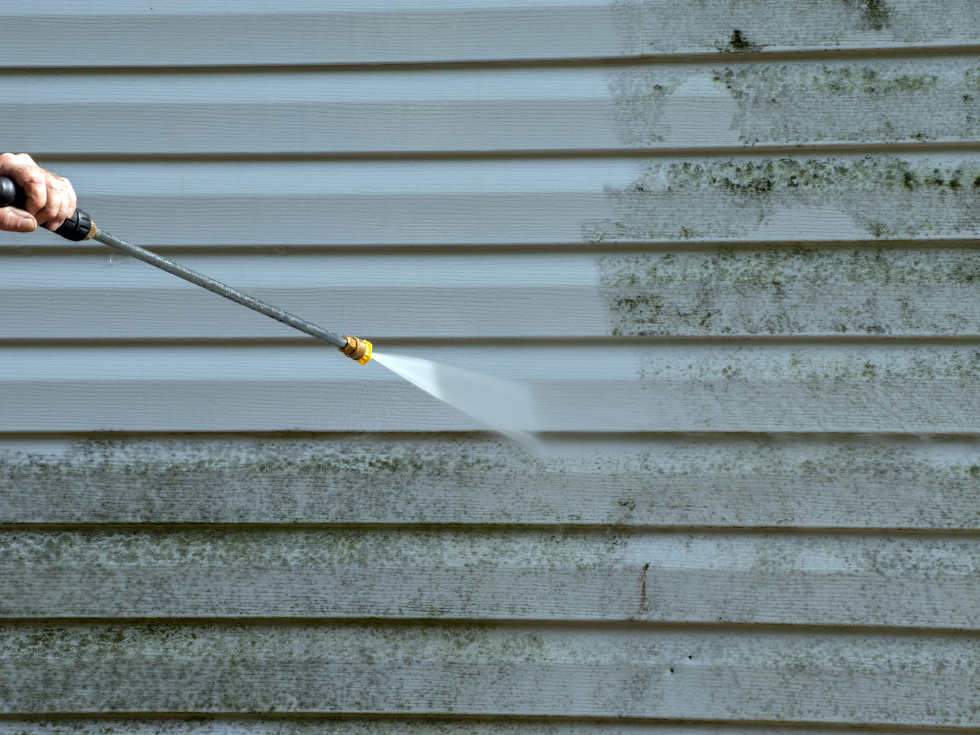
Exterior House Repaint During Renovation
Over time, exposure to UV Rays, Dust and more can lead to wear and tear on your home's exterior paint. So when planning a renovation, consider repainting the house exterior to not only refresh its look but also provide essential protection against weathering. Look for opportunities to enhance curb appeal and increase the overall value of your property through a well-executed house repaint.
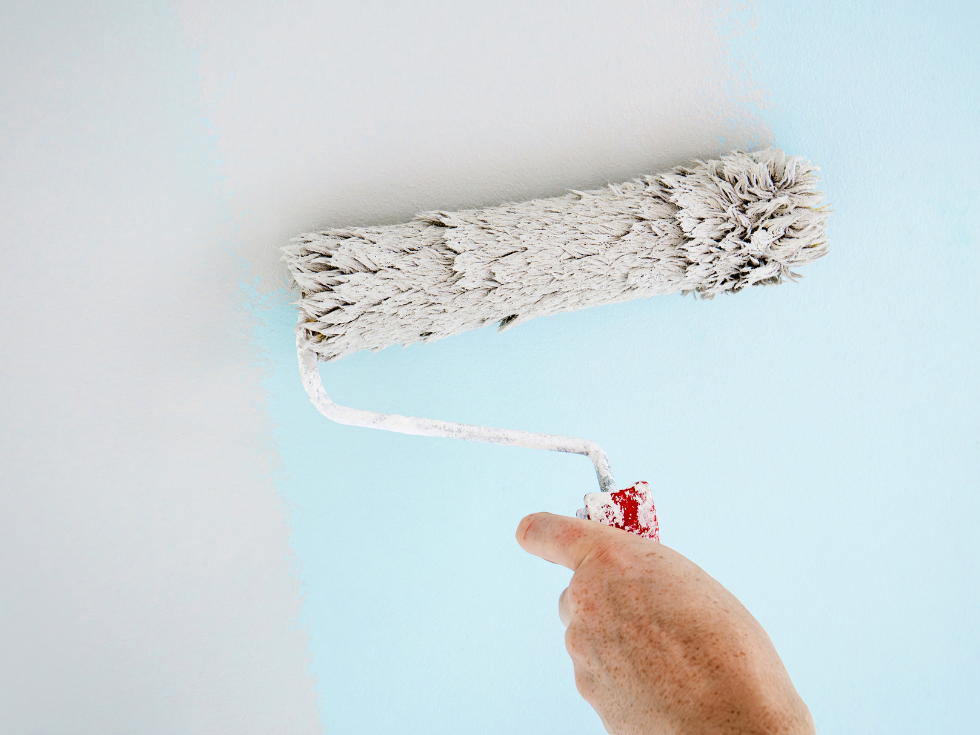
Common Exterior Painting Issues
When it comes to exterior painting, there are several common issues that homeowners may encounter. These problems can affect the appearance and durability of the paint job if not addressed properly. Here are some of the most common exterior painting issues:
- • Blistering
- • Cracking
- • Peeling
- • Fading or Chalking
- • Efflorescence
- • Mold and Mildew Growth
- • Flaking
- • Poor Surface Preparation
Bubbles or blisters that form on the painted surface, usually caused by moisture or heat.
The formation of small, interconnected cracks that resemble alligator skin. This can occur due to excessive buildup of paint layers or poor adhesion.
Paint that starts to detach from the surface, often caused by inadequate surface preparation or moisture intrusion.
Gradual loss of colour or a powdery residue on the surface of the paint film, typically caused by the breakdown of pigments or exposure to sunlight.
The appearance of white, powdery deposits on masonry surfaces, resulting from salt migration through the paint film.
Dark spots or patches of fungus or algae growth on the painted surface, particularly in areas with high humidity or poor ventilation.
Large pieces of paint that separate from the surface, often due to poor adhesion or moisture-related issues.
Inadequate cleaning, priming, or sanding before painting, leading to poor adhesion and paint failure.
To address these problems, proper surface preparation, quality paint products, and correct application techniques are essential.
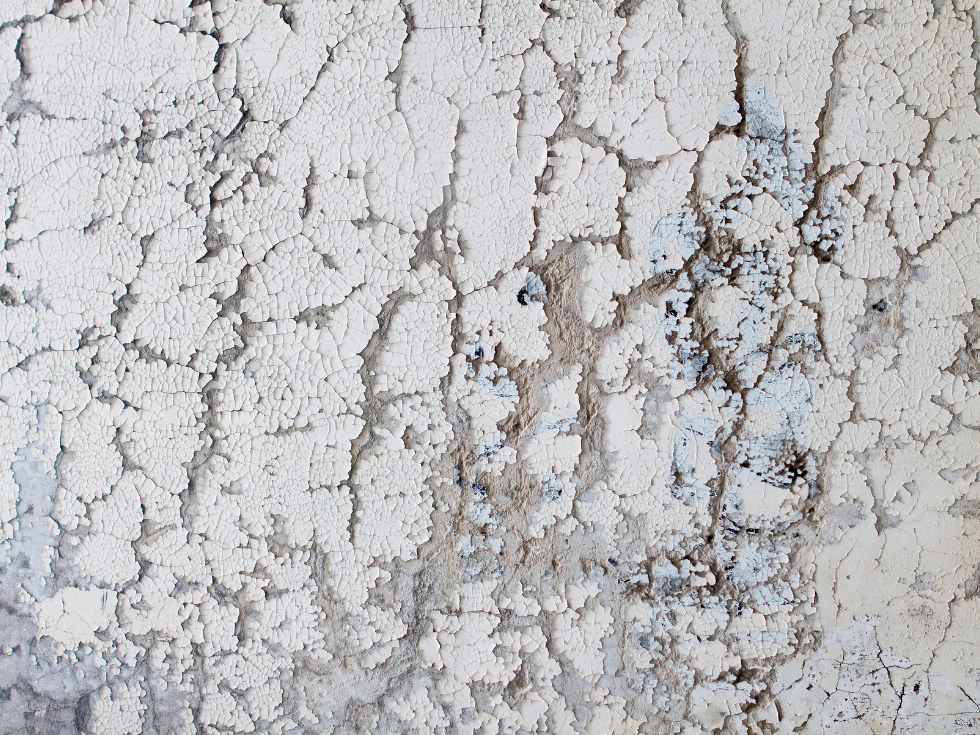
How Asian Paints Can Help with Exterior Wall Painting For You?
When it comes to exterior wall painting you can rely on Asian Paints range of products and services. We provide resources and guidance on the preparation, painting process, and colour selection for your exterior walls. With our Safe Painting Services, we also follow specific steps to ensure a successful paint job, including cleaning the walls, applying the best paint for exterior walls and layering it with a waterproofing solution to make your walls look good and healthy. With our expertise, you can achieve a beautiful and long-lasting finish for your exterior walls.




